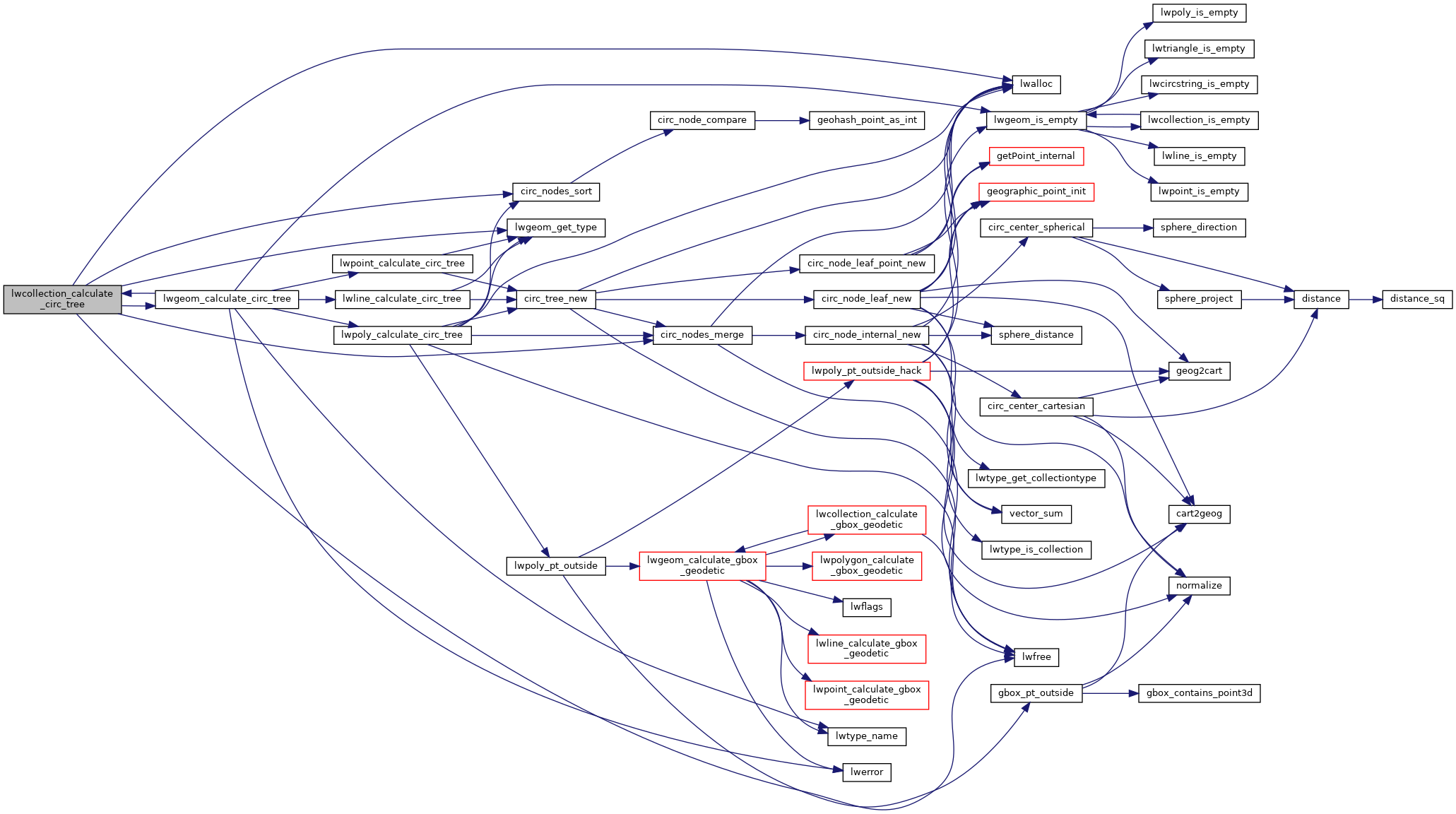◆ lwcollection_calculate_circ_tree()
|
static |
Definition at line 976 of file lwgeodetic_tree.c.
CIRC_NODE * lwgeom_calculate_circ_tree(const LWGEOM *lwgeom)
Definition: lwgeodetic_tree.c:1005
static CIRC_NODE * circ_nodes_merge(CIRC_NODE **nodes, int num_nodes)
Definition: lwgeodetic_tree.c:410
static void circ_nodes_sort(CIRC_NODE **nodes, int num_nodes)
Given a list of nodes, sort them into a spatially consistent order, then pairwise merge them up into ...
Definition: lwgeodetic_tree.c:403
Definition: liblwgeom.h:443
Note that p1 and p2 are pointers into an independent POINTARRAY, do not free them.
Definition: lwgeodetic_tree.h:37
References circ_nodes_merge(), circ_nodes_sort(), circ_node::geom_type, LWCOLLECTION::geoms, lwalloc(), lwfree(), lwgeom_calculate_circ_tree(), lwgeom_get_type(), LWCOLLECTION::ngeoms, and sort_node::node.
Referenced by lwgeom_calculate_circ_tree().
Here is the call graph for this function:

Here is the caller graph for this function:
